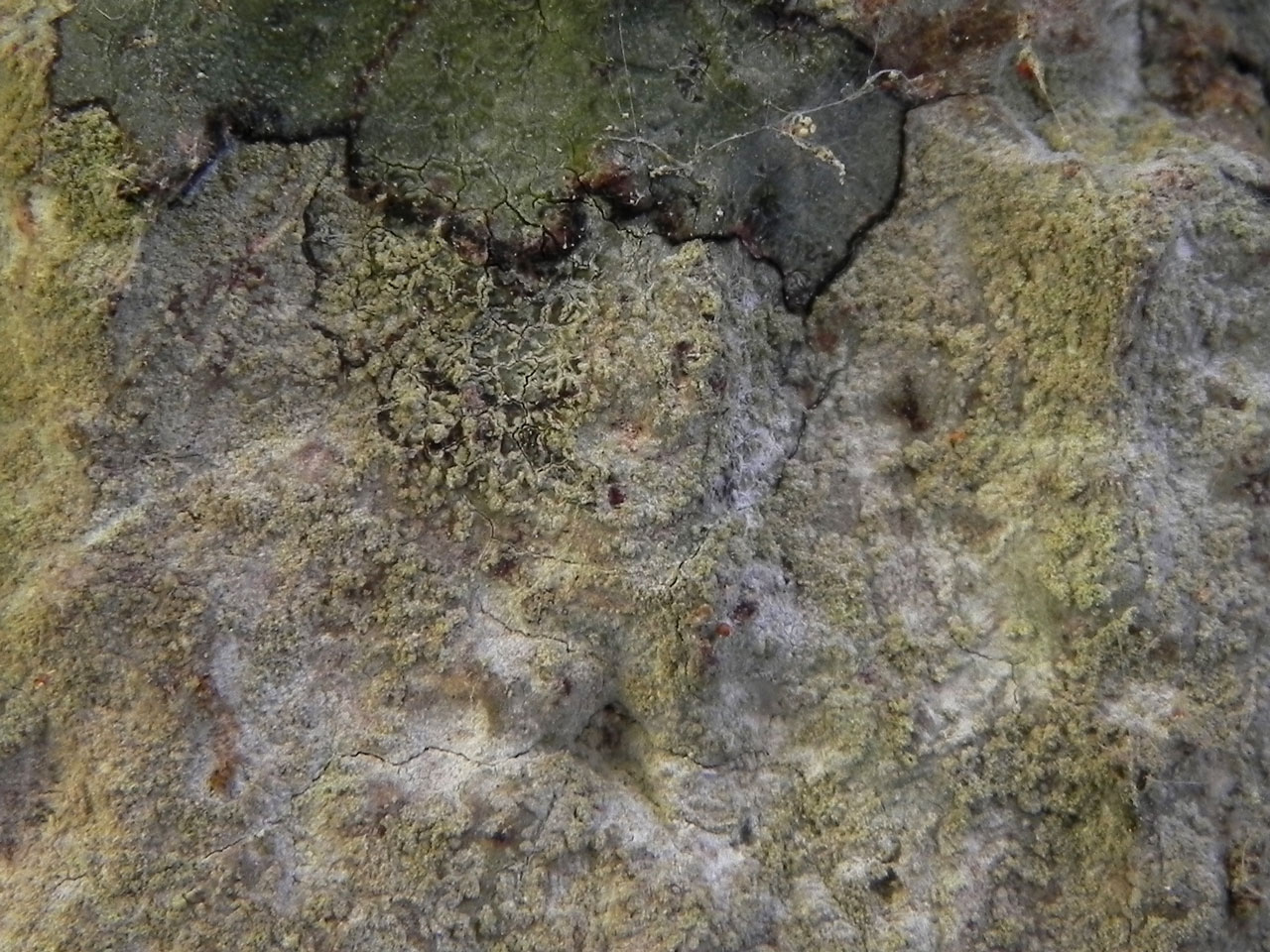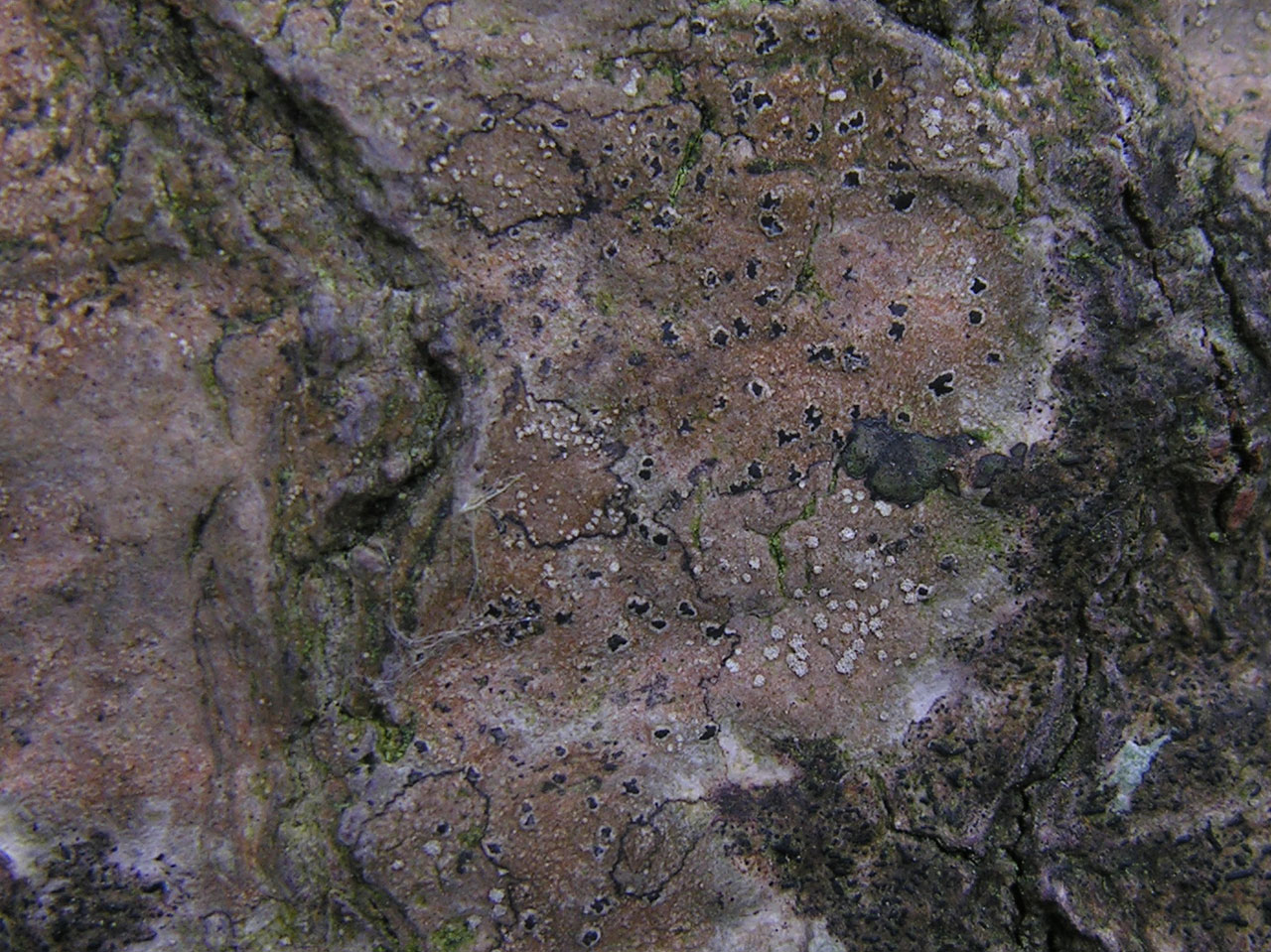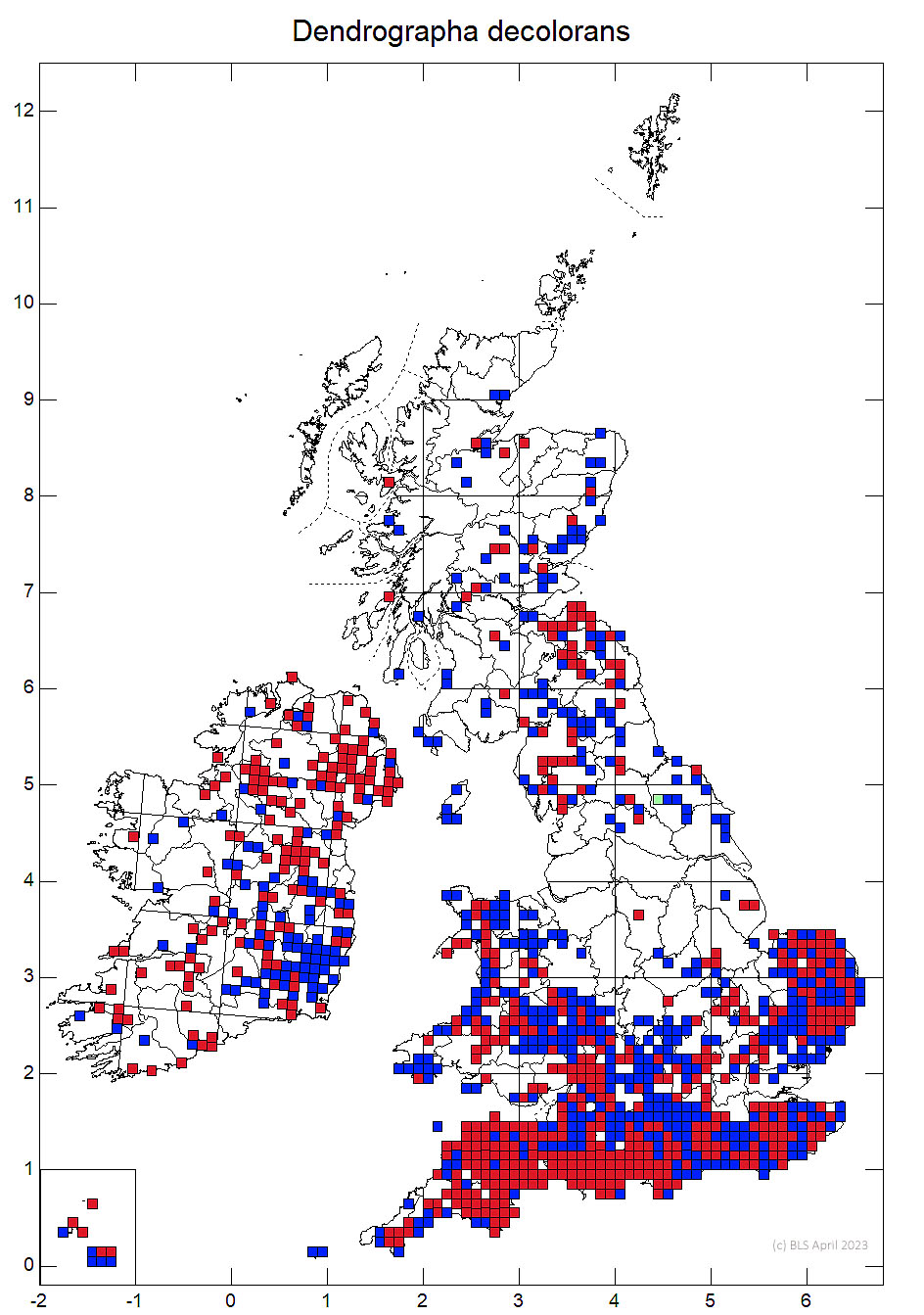Dendrographa decolorans is the most widespread of a series of grey-brown to whitish usually sterile sorediate species that grown on dry bark in the south and west and probably depend on dew for a good deal of their water. These can be separated by subtle colour differences and by spot tests with Dendrographa decolorans lacking any positive spot tests. It is quite distinctive when younger, with mauve-grey to pale lilac-grey neat punctiform soralia on a slightly darker thallus. When well developed, the soralia spread and becoming confluent and separation from taxa like Syncesia myrticola, sorediate morph (Enterographa sorediata) depends on spot tests.
Thallus thin, white to lilac- to pinkish grey, becoming grey to brownish grey in dried collections, ± rimose; a grey-black prothallus often present; soralia punctiform when young, spreading and becoming confluent, mauve-grey to pale lilac-grey, occasionally with an ochre tinge. Apothecia rare, elongate to circular, 0.5–1.3 mm diameter, disc convex, persistently pruinose. Ascospores fusiform, curved, 30–37 × 4–5 μm. Pycnidia rare; conidia 6–7 × 2 μm, bacilliform, straight to slightly curved, 1-septate, pale olive-brown or colourless. Thallus C–, K–, KC–, Pd–, UV– (unidentified fatty acids).
The sorediate morph of Syncesia myrticola (formerly referred to as Enterographa sorediata) is very similar but is patchily Pd+ rust-red (weak Pd reactions are more visible in UV light) thus distinguishing it from D. decolorans (Pd–) and Snippocia nivea (Pd+ yellow-orange); also expanding thalli of that species can have a distinctive brown fimbriate prothallus that is diagnostic in the dry bark habitat. Both D. decolorans and S. myrticola often occur in a mosaic. With practice the slightly waxier thallus and paler soralia of S. myrticola can help pick out candidates for confirmation with Pd. Pachnolepia pruinata also resembles D. decolorans in the field but is C+ red and usually fertile.
Mixed populations of D. decolorans and Enterographa crassa occur widely. In these the D. decolorans is growing over or through E. crassa, with the soralia of D. decolorans first developed along the areole margins, while the E. crassa apothecia are still visible.
On the dry sides of young to old deciduous trees in wayside and woodland sites, tolerant of relatively high levels of agricultural chemicals and fertilisers; often abundant.

South & E. Britain (fertile material found rarely in southern Britain), rare to the north, extending to E. Ireland, rare in the west.
Cannon, P., Aptroot, A., Coppins, B., Ertz, D., Sanderson, N., Simkin, J. & Wolseley, P. (2021). Arthoniales: Roccellaceae, including the genera Cresponea, Dendrographa, Dirina, Enterographa, Gyrographa, Lecanactis, Pseudoschismatomma, Psoronactis, Roccella, Schismatomma and Syncesia. Revisions of British and Irish Lichens 16: 1-22.
Text by Neil A Sanderson based on Cannon et al (2021)



